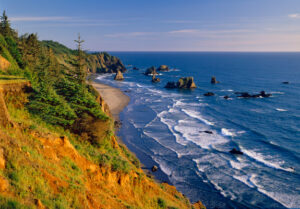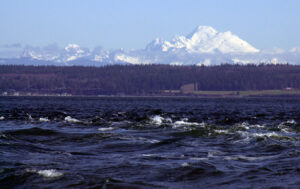

Ron and Patty Thomas Photography/Getty Images
The Oregon Coast
Imagine yourself trudging along through a thick jungle, leading an expedition of around 200 men in search of a “new sea” that is said to be rich in gold and pearls. The land you are traveling through is already inhabited, and some of the people who live there are not happy about your arrival. You fight many battles along the way but somehow always emerge victorious. However, many of those traveling with you are badly wounded in the fighting and are forced to stay behind. One day a native to the area tells you that if you climb to the top of a nearby hill, you will get a glimpse of what you’ve been searching for. You hike to the top of the summit alone and cast your gaze out on the horizon. Finally, you see what you’ve been looking for: water! You rush to the coast and plunge your sword into the sand. Raising your eyes toward heaven, you claim the new waters and all the adjoining lands for your king and queen.
This is what it must have been like in 1513 when Vasco Núñez de Balboa crossed the Isthmus of Panama to reach the Pacific Ocean. He had “discovered” what he called the Mar del Sur. It was the event that paved the way for other Spanish explorers along the Pacific coast.

dschreiber29/Getty Images
Mount Baker, a volcano in the Cascade Mountains in Washington State. The Strait of San Juan de Fuca connects the Pacific Ocean to the Puget Sound.
Explore More:
1. Across the United States you can find landmarks named by or in honor of Spanish explorers, like the Heceta Head Lighthouse mentioned in the timeline. Do some investigating in the area where you live. What evidence can you find of Spanish exploration? Are there rivers, lakes, parks, or streets with Spanish names? Use this chart to help organize your information. Share with your class in Spanish what you find.
2. When the Europeans began exploring and settling in the Pacific Northwest, the land was already inhabited by Native American groups who traded with them, giving them mostly furs. What Native American groups were found in the region? What animals may have been hunted for their furs?
3. The Adams-Onís Treaty changed the landscape of the United States. Besides acquiring Spanish claims in the Pacific Northwest, what other land did the United States gain? What did Spain get in return?